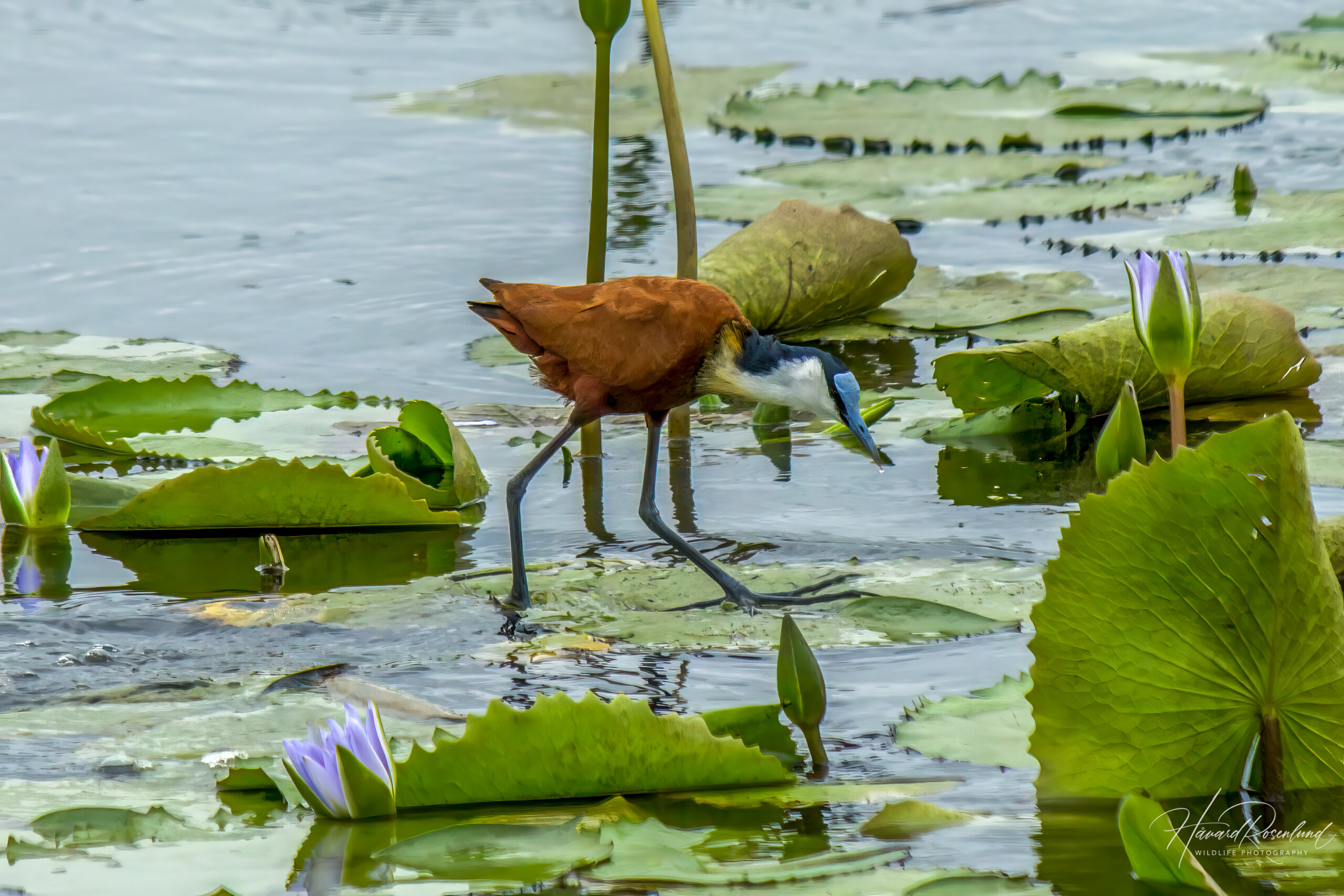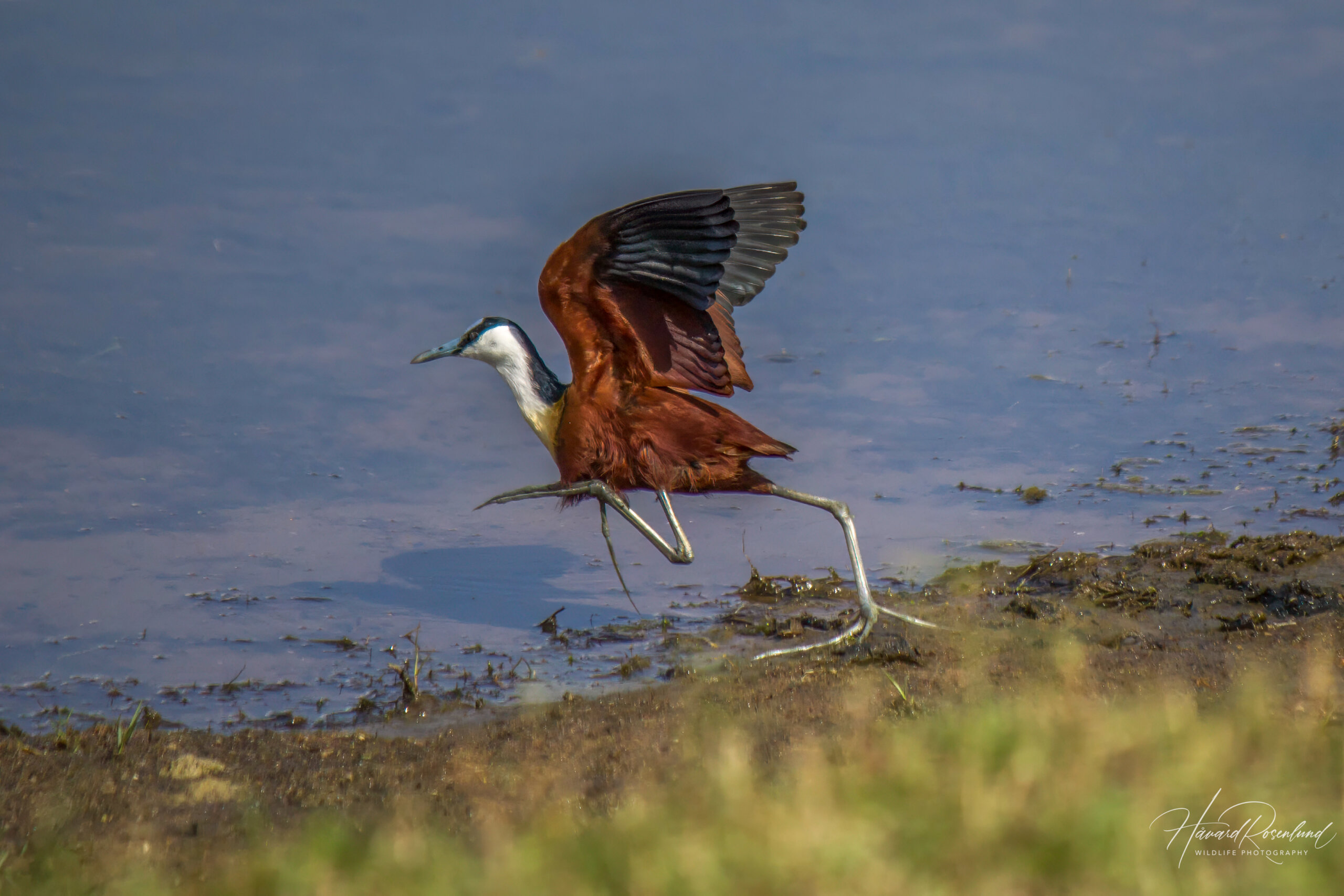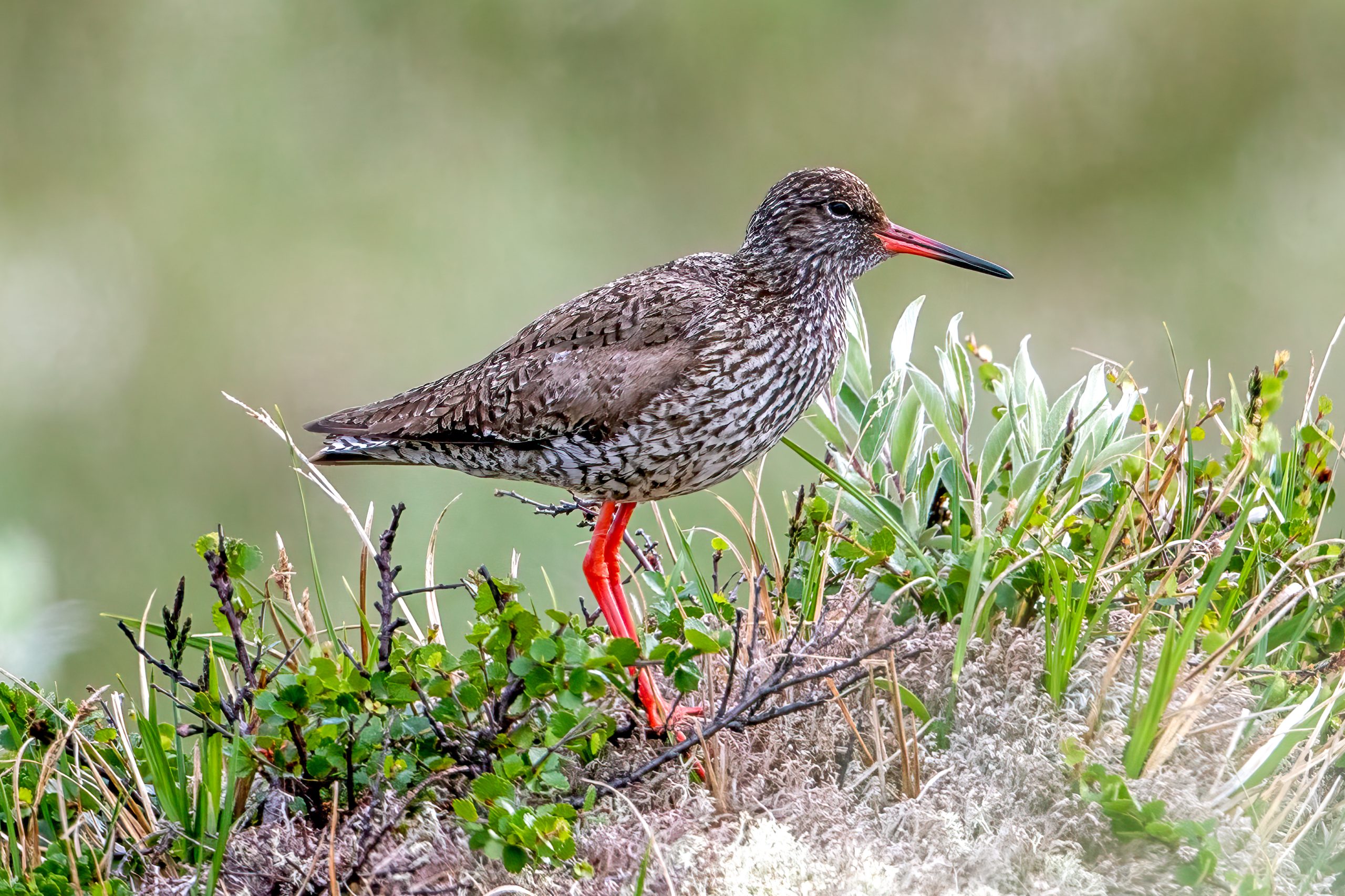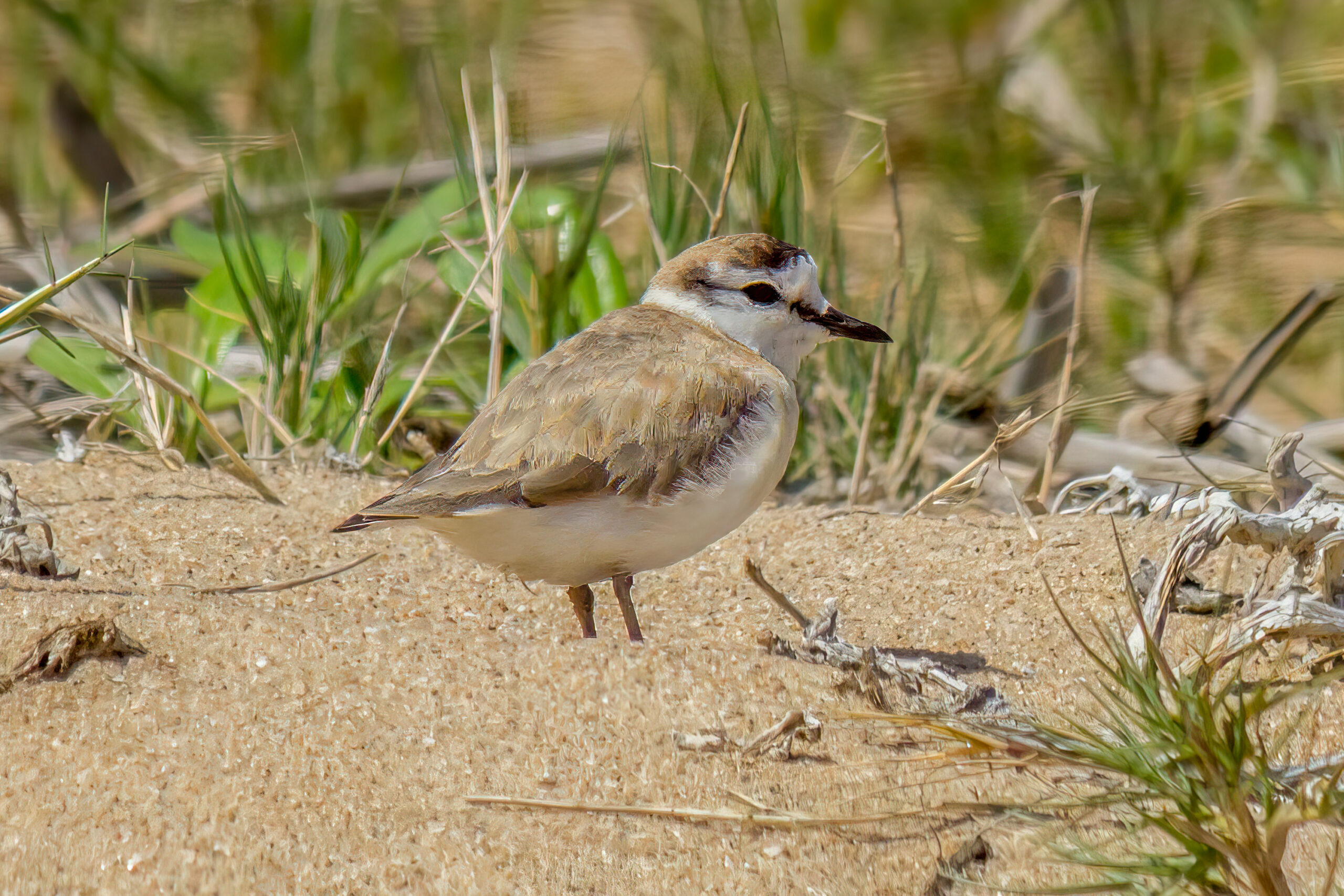Description
The African jacana (Actophilornis africanus) is a common species of jacana in sub-Saharan Africa. Jacanas are waders with conspicuous long toes and claws made for walking on floating vegetation in shallow water. Jacanas are sometimes called Jesus birds because of this ability. The African jacana is easily recognized with its chestnut body, white and black head and a blue beak that extends over its eyes. It normally reaches a length of 30 cm (12 in) with females somewhat larger than males.
Diet & habitat
African jacana is found in various still to slow-moving freshwater habitats, such as lakes, marshes and large slow-moving rivers. It needs floating vegetation for breeding and often tall reeds and similar vegetation for shelter and hiding. It is often found at the edge of the water or walking on floating vegetation, such as waterlilies, where it primarily feeds on insects in addition to spiders, worms, crustaceans, mollusks, and seeds.
Nesting
The African jacana can breed throughout the year in areas where water is constant but will breed seasonally where water levels fluctuate between seasons. It is a polyandrous species, meaning females mate with multiple males. Males hold smaller territories within larger female territories in which the males alone build nests, incubate eggs, and care for the young. Females hold harems of multiple males. The female will lay four brown eggs with black markings in a simple partially submerged or floating nest. She will leave the eggs in the nest for the father to incubate and will have no more to do with the offspring.
Status
The African jacana is a widespread species and common throughout its range. The population is large and stable and under no immediate threat. It is listed as least concern on IUCN Red List. Because of loss of suitable habitat in some areas due to human activities, local disappearance of the species is possible.









